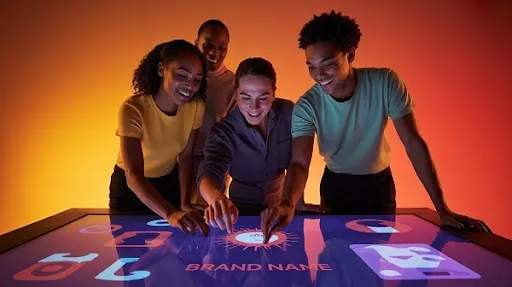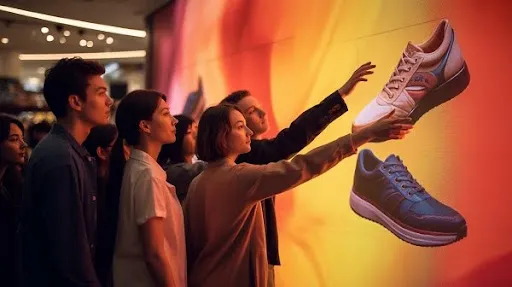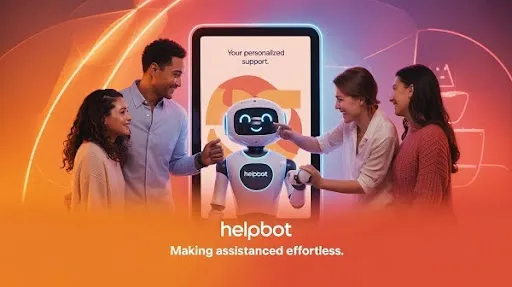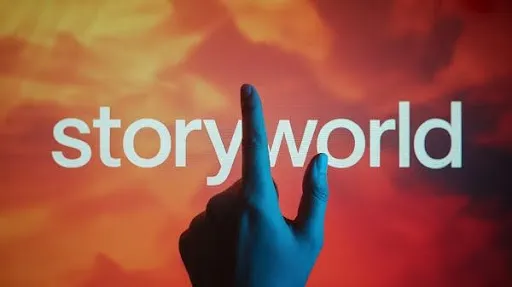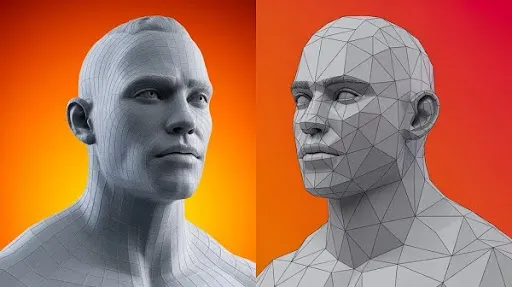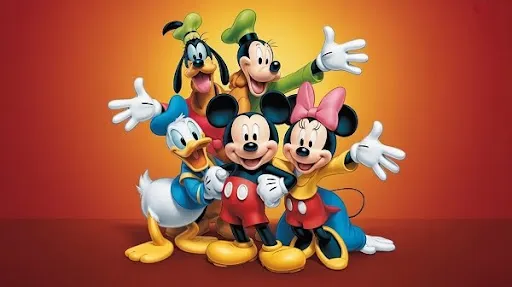Scrolling through today’s feeds feels like flipping through static wallpaper. Ads pop, videos autoplay, graphics flash — but none of it sticks. Most of it disappears before you even register what you saw. The stuff that makes people pause is the content they can actually do something with.
That’s why interactive animation is exploding right now. Instead of asking people to sit back and watch, it lets them take part. Click, drag, tap, speak, or choose — the story bends around their action. Suddenly, it’s not just content to look at, it’s an experience they shape. Furthermore, interactive video achieves a 300% higher engagement rate than traditional video
Brands, educators, and creators are rushing in because the old way of “telling” stories isn’t enough anymore. In 2025, the audience expects to step inside. And the brands that don’t adapt? They’ll be skipped.
Defining Interactive Animation
So what actually counts as interactive animation? At its simplest, it’s an animation that reacts to a person’s input. Every click or gesture pushes the sequence in a new direction.
Click a character, and they move. Drag an object, and a hidden scene unfolds. Say a command, and the animation listens. Each action sparks a unique response.
That’s the difference between pressing play on a video versus being inside the story. One keeps you passive, the other makes you part of it.
Think about cartoons versus games. Cartoons are entertaining, but once they end, that’s it. Games pull you in because your choices matter. Interactive animation and interactive storytelling combine those two strengths.
With traditional animation, you had one beginning, middle, and end. Now? There can be multiple endings, each based on what the user decides. That’s why people stay longer — they want to see what else could happen.
The Advantages of Implementing Interactive Animation
Companies aren’t experimenting with this just for flashy visuals. The advantages of interactive animations directly affect engagement, user experience, and conversions.
Enhanced Engagement
The biggest payoff is attention. People scroll fast. Static images barely get a glance. A simple animation might hold them for a second or two. But interactive animation makes them stop, click, and continue exploring. Participation beats passivity every time.
Improved User Experience
When users see their choices shape the content, they feel more connected. That sense of involvement makes the experience more memorable. It’s not just watching — it’s participating.
Education proves this point better than anything. Gamified learning backed by interactive animation leads to stronger recall and better results because learners experiment, explore, and discover instead of just reading or watching.
Higher Conversions
A big benefit of utilizing interactive animation is nudging people toward action. Instead of a hard sell, the interaction itself guides them through steps — explore a product, test a feature, uncover a benefit. By the end, they’re ready to buy, sign up, or download without feeling pressured.
Making Complex Ideas Simple
Not every product is easy to explain. That’s why 2D animation services are so popular. Add interactive elements, and you can break down complicated systems into bite-sized, click-through stories. Users learn by doing, not just reading.
Standing Out in the Market
Here’s the underrated advantage: most brands aren’t doing it yet. That gives early adopters a huge edge. In crowded industries, interactive animation makes a company look original and bold while everyone else still runs static ads or plain videos.
Techniques of Interactive Animation
How do creators make this work? Here are proven techniques of interactive animation used today:
Key Decision Points in Storytelling
One simple but powerful method is adding choice-driven forks in the story. Even two or three options keep people engaged because they want to know what happens if they choose differently.
Personalized User Journeys
Content lands harder when it feels like it’s made for you. Adding names, tailoring dialogue, or adjusting scenes based on prior clicks builds a sense of personal attention.
Exploration Opportunities
Give people a digital playground. Hidden clicks, scroll-based reveals, or interactive maps make users stick around longer. Small discoveries layer into a bigger, more satisfying experience.
Animation Techniques for Interaction
The mechanics behind it matter too. A few of the most effective tools include:
Clickable Elements
Tap an object and something happens. Simple, intuitive, and rewarding. It keeps users curious and moving forward.
Hover Interactions
A small hover effect — glow, flip, color change — brings static designs to life. These micro-interactions add polish and satisfaction without overwhelming the user.
Drag-and-Drop Features
People like control. Dragging and rearranging objects feels natural and keeps them engaged. This has become a standard in web tools for a reason.
Gamification and Interactive Animation
Blend gamification and interactive animation to keep users motivated. Points, badges, or even a progress bar can turn browsing into a challenge they want to complete.
Responsiveness
Lag kills interest. A user action should spark an immediate response. The smoother the experience, the more immersive it feels.
The Expanding Role of Interactive Animation in Business
By 2025, companies aren’t asking “should we use interactive animation?” anymore — they’re asking “how do we use it best?” The difference lies in understanding its role not just as decoration but as a driver of strategy.
For businesses, the advantages of implementing interactive animation go beyond keeping up with trends. It changes how audiences learn about products, how they experience services, and how they make decisions.
Driving Deeper Brand Connections
A static ad can tell a story. A moving video can show one. But interactive animation and interactive storytelling let the audience step into the brand’s world. They click, choose, and engage — which makes them feel like participants instead of bystanders.
That emotional involvement builds stronger connections. When users control even small parts of the story, the brand feels more relatable. This isn’t just marketing content anymore — it’s a conversation.
Education and Training That Sticks
One of the most exciting areas for growth is education. Universities, e-learning startups, and corporate training teams are relying heavily on techniques of interactive animation to boost learning outcomes.
Instead of flipping through slides or watching endless videos, learners interact. They move through scenarios, drag objects, choose answers, and immediately see consequences. This kind of hands-on digital engagement helps information stick.
That’s why many institutions are partnering with 3D animation agencies to design immersive training content. The investment pays off because the recall rate is significantly higher when learners can explore rather than just observe.
Simplifying Complex Products
Financial tools, healthcare platforms, and SaaS dashboards can confuse users quickly. But a well-crafted interactive walkthrough turns confusion into clarity.
For example:
- A bank might use interactive animation to let users explore mortgage options by adjusting sliders.
- A healthcare app could show patients how a treatment works with click-based animations.
- A software company might guide new users step by step with hover-triggered tips and drag-and-drop tutorials.
The benefit of utilizing interactive animation here is simple: it makes complexity digestible. Instead of reading walls of text, users learn by doing — which feels natural.
The Rise of Immersive Campaigns
The marketing world is especially hungry for standout ideas. In crowded feeds, interactive animation’s latest trends and innovations are giving brands the edge they need.
Campaigns Built on Choice
Instead of one commercial that plays the same for everyone, brands are building campaigns with branching paths. Each choice the audience makes takes them deeper into a personalized experience.
It might start with a question like: “Which style fits you best?” From there, the animation shifts and responds, ultimately showcasing the product in a way that feels custom. This approach is sticky — users often replay the experience just to see what happens when they choose differently.
Gamified Ads
Ads are no longer something to skip. With gamification and interactive animation, they become something people play. Imagine unlocking rewards, competing in mini-challenges, or racing against time inside a brand’s ad. Suddenly, what used to be background noise becomes a moment of entertainment.
Brands using this approach report not only higher engagement but also stronger recall. People may forget a static banner, but they remember the ad they played with.
AR and VR Extensions
More brands are also experimenting with AR product demos and VR tours powered by interactive animation. Try-on features, interactive store walkthroughs, or immersive product showcases allow customers to preview before buying. This reduces uncertainty, builds trust, and often increases conversions.
Interactive Animation’s Impact on Storytelling
We already know interactive animation on storytelling processes changes how stories are told. But in 2025, it’s starting to define entire campaigns and content strategies.
Multiple Endings, Multiple Emotions
Instead of creating one emotional arc, storytellers design several. Each user’s choice unlocks a different ending. This makes the narrative more personal. Two people can walk away from the same campaign having felt entirely different emotions — and both are valid.
User-Generated Feel
When people participate, they feel like co-creators. Even though the brand designed all the paths, the sense of authorship belongs to the audience. That creates pride, loyalty, and word-of-mouth sharing.
A brand story shaped by its customers doesn’t just entertain — it becomes memorable.
Interactive Animation: Techniques and Trends Defining 2025
What separates brands experimenting from those thriving is how well they use the techniques of interactive animation already proven to work. Let’s break down a few shaping 2025.
AI as the Silent Director
AI-driven systems analyze choices in real time. If a user lingers on certain elements, the animation adjusts to emphasize those. If someone skips ahead, AI streamlines the journey. The experience feels alive, almost like it knows what you’re thinking.
Micro-Interactions Done Right
Hover effects, scrolling animations, and click reveals are now standard, but the difference is in execution. Subtlety is key — when done well, they guide users without distracting them. Done poorly, they overwhelm.
Surrealism Meets Hyperrealism
Creative teams are blending surreal design styles with hyper realistic textures to surprise audiences. The mix of dreamlike visuals with lifelike detail keeps users curious. It’s no longer about looking real — it’s about standing out.
Responsive Design First
People switch devices constantly. A mobile-first approach to interactive animation is non-negotiable. Touch gestures, drag mechanics, and responsive elements must feel natural on smaller screens, or the user drops off.
Frequently Asked Questions
What is interactive animation, in simple terms?
It’s an animation that responds to user input — clicks, taps, drags, or voice commands — instead of just playing passively.
What are the main advantages of interactive animations for businesses?
The biggest advantages are higher engagement, improved learning, simpler explanations of complex products, stronger emotional connections, and better conversion rates.
Which industries use interactive animation the most?
Education, marketing, healthcare, software, and e-commerce are leading adopters. But in 2025, nearly every sector is exploring it.
Do I need a 3D animation agency, or can 2D animation services work too?
Both can work. It depends on the project. 2D animation services are often best for simple, lightweight experiences, while a 3D animation agency is ideal for immersive or hyperrealistic content.
What are the latest trends in interactive animation?
AI personalization, AR/VR integrations, gamified ads, hyperrealistic visuals, and micro-interactions that guide users smoothly.
Final Word
By now it’s clear: interactive animation isn’t a novelty anymore. It’s a driver of attention, loyalty, and conversions. From gamified ads to AI-powered personalization, the tools are here — what matters is how brands choose to use them.
The choice is simple: keep running static content that gets ignored, or create experiences people can shape, remember, and share.
At Prolific Studio, one of the best animation studios in Massachusetts, we help brands, educators, and businesses tap into the full benefit of utilizing interactive animation — making content not just seen but experienced.
So the question isn’t if you should use it. The real question is: when will you start?
Related articles:

